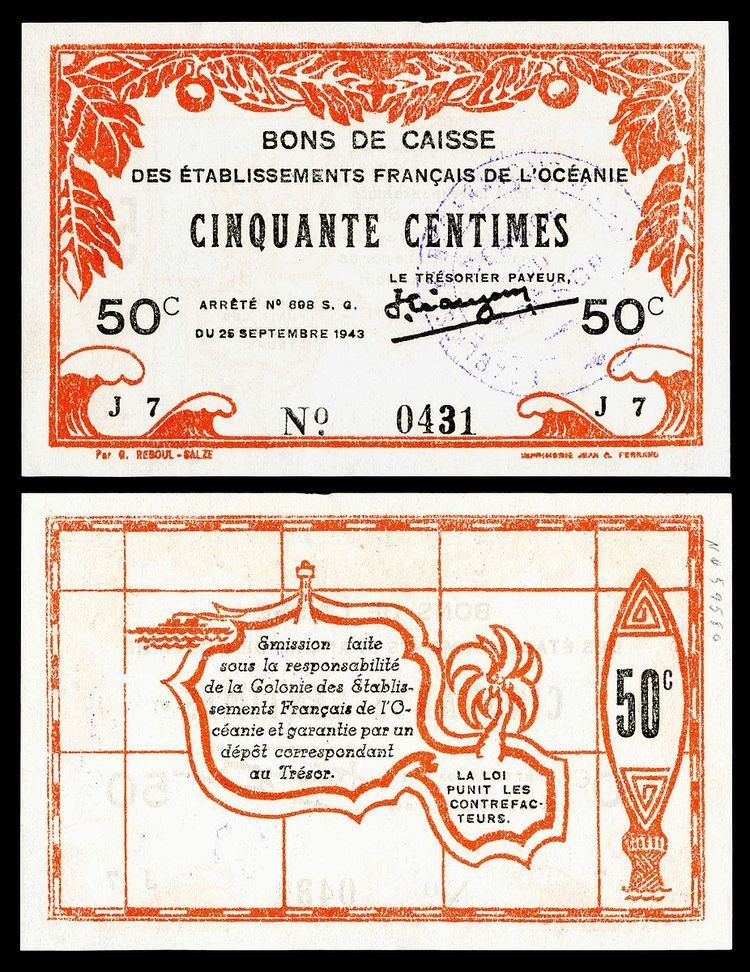 | ||
The franc is the currency of French Polynesia. It is subdivided into 100 centimes. Since 1945, it has been part of the CFP franc.
Contents
History
Until 1914, the French franc circulated in French Polynesia. That year, banknotes were issued specifically for use on in the colony which circulated along with French coins. In 1945, the CFP franc was introduced, with coins issued for French Oceania (Etablisements Français de l'Océanie as the colony was then known) from 1949. From 1965, the name French Polynesia (Polynésie Française) has been used. The CFP franc is also issued in New Caledonia and was used in the New Hebrides until 1983. Since 1985, banknotes have been issued common to both French Polynesia and New Caledonia, although separate coinages continue.
Coins
In 1949, aluminium 50 centimes, 1 and 2 francs were introduced, followed by aluminium 5 francs in 1952. The 50 centimes was only issued in 1949. These coins carried the name Océanie. From 1965, the name changed to Polynesie. In 1967, nickel 10, 20 and 50 francs were introduced, followed by nickel-bronze 100 francs in 1976.
The overall design of the coins has not changed since their introduction and the obverse has always been identical to that of the coins of the New Caledonian franc. The only notable changes were the removal of the text "Union Française" and the change of name from "Établisements Français de l'Océanie" to "Polynésie Française" after 1952 and the addition of the initials "I.E.O.M" (Institut d'émission d'Outre-Mer) to the obverse in 1972.
